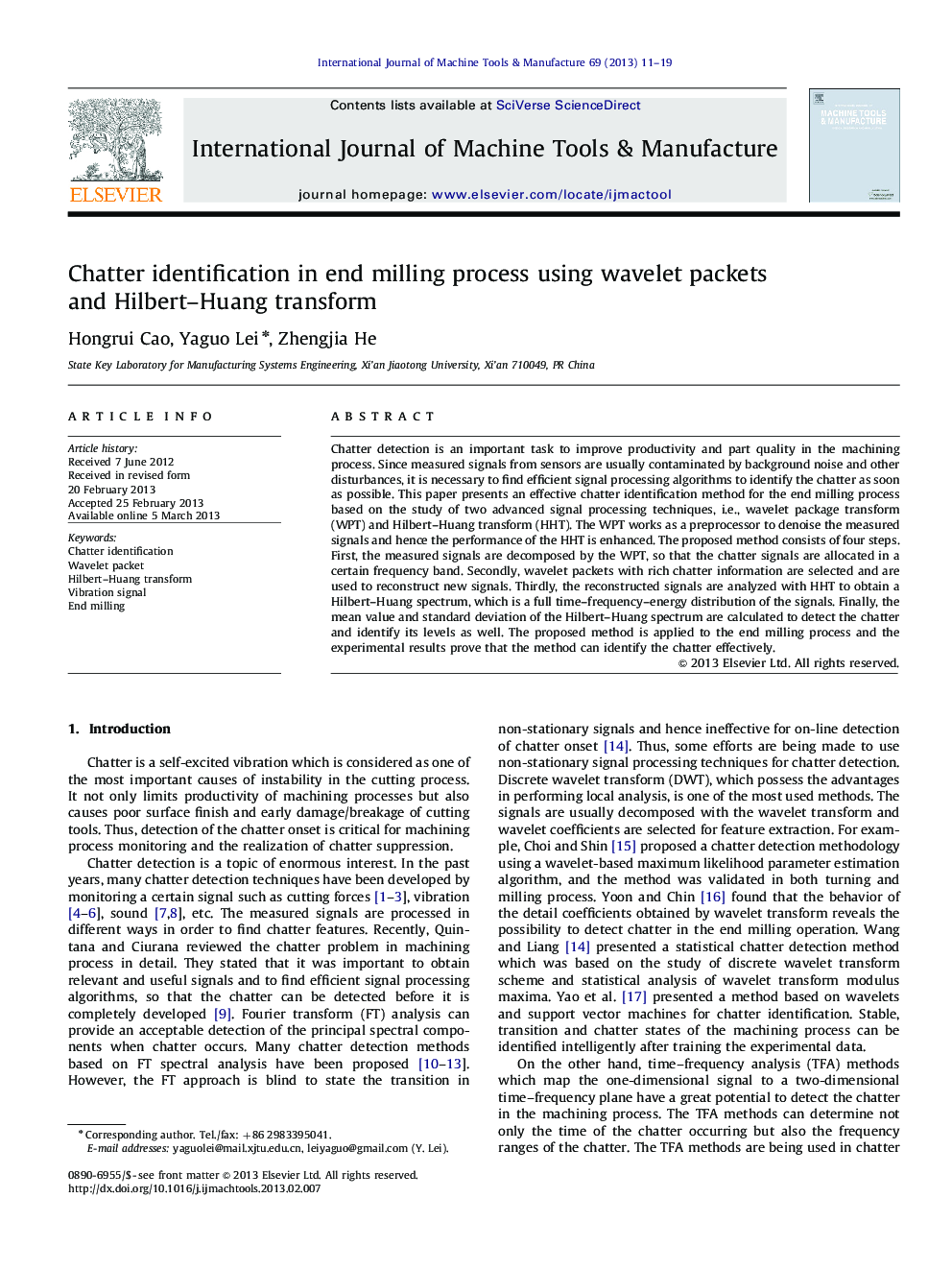| Article ID | Journal | Published Year | Pages | File Type |
|---|---|---|---|---|
| 784405 | International Journal of Machine Tools and Manufacture | 2013 | 9 Pages |
Chatter detection is an important task to improve productivity and part quality in the machining process. Since measured signals from sensors are usually contaminated by background noise and other disturbances, it is necessary to find efficient signal processing algorithms to identify the chatter as soon as possible. This paper presents an effective chatter identification method for the end milling process based on the study of two advanced signal processing techniques, i.e., wavelet package transform (WPT) and Hilbert–Huang transform (HHT). The WPT works as a preprocessor to denoise the measured signals and hence the performance of the HHT is enhanced. The proposed method consists of four steps. First, the measured signals are decomposed by the WPT, so that the chatter signals are allocated in a certain frequency band. Secondly, wavelet packets with rich chatter information are selected and are used to reconstruct new signals. Thirdly, the reconstructed signals are analyzed with HHT to obtain a Hilbert–Huang spectrum, which is a full time–frequency–energy distribution of the signals. Finally, the mean value and standard deviation of the Hilbert–Huang spectrum are calculated to detect the chatter and identify its levels as well. The proposed method is applied to the end milling process and the experimental results prove that the method can identify the chatter effectively.
► An effective chatter identification method is presented for end milling process. ► HHT with the WPT preprocessor works more efficiently than individual HHT. ► The mean value and standard deviation of the Hilbert–Huang spectrum are calculated as chatter indices.
